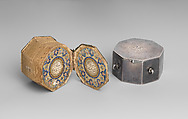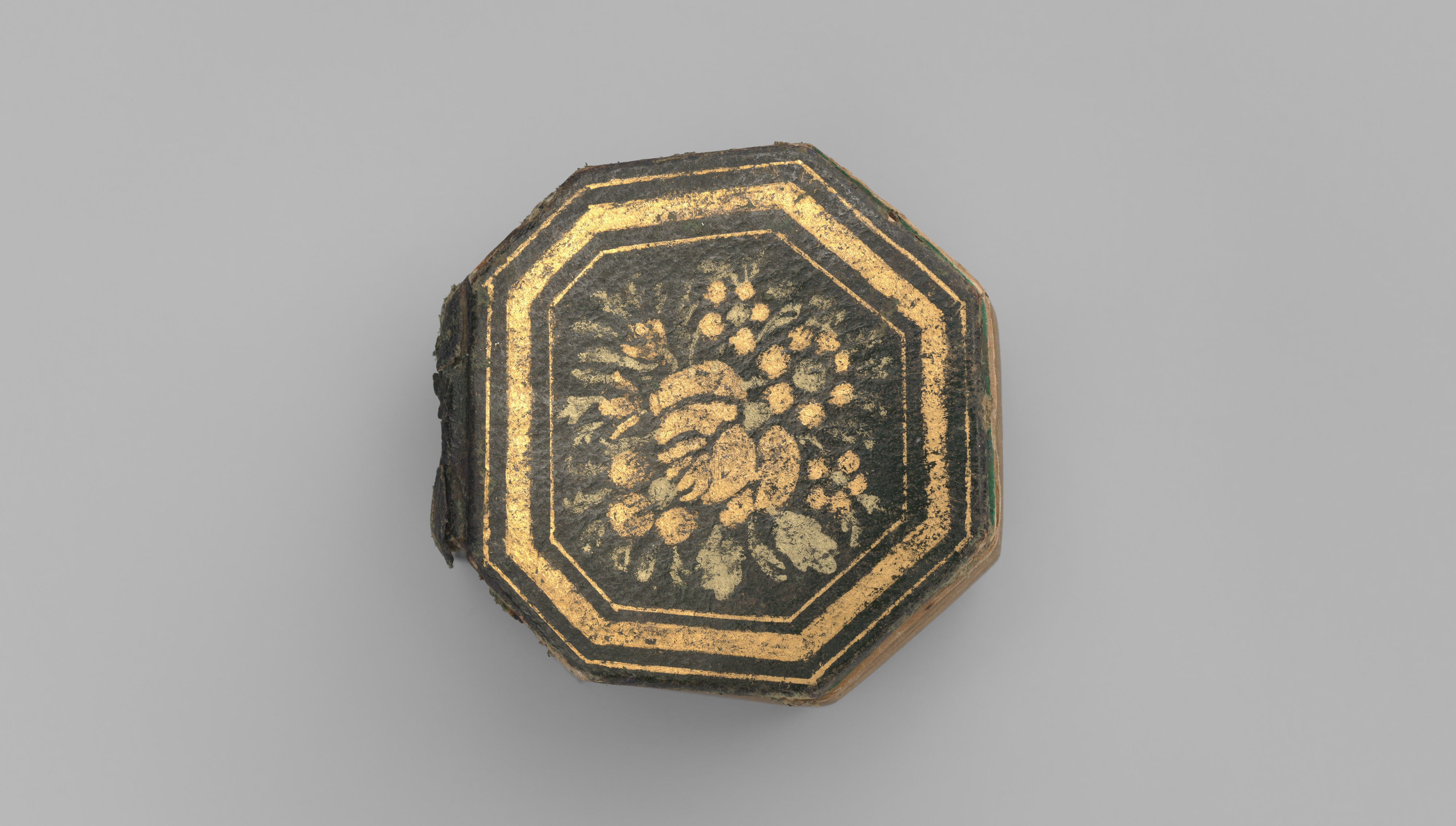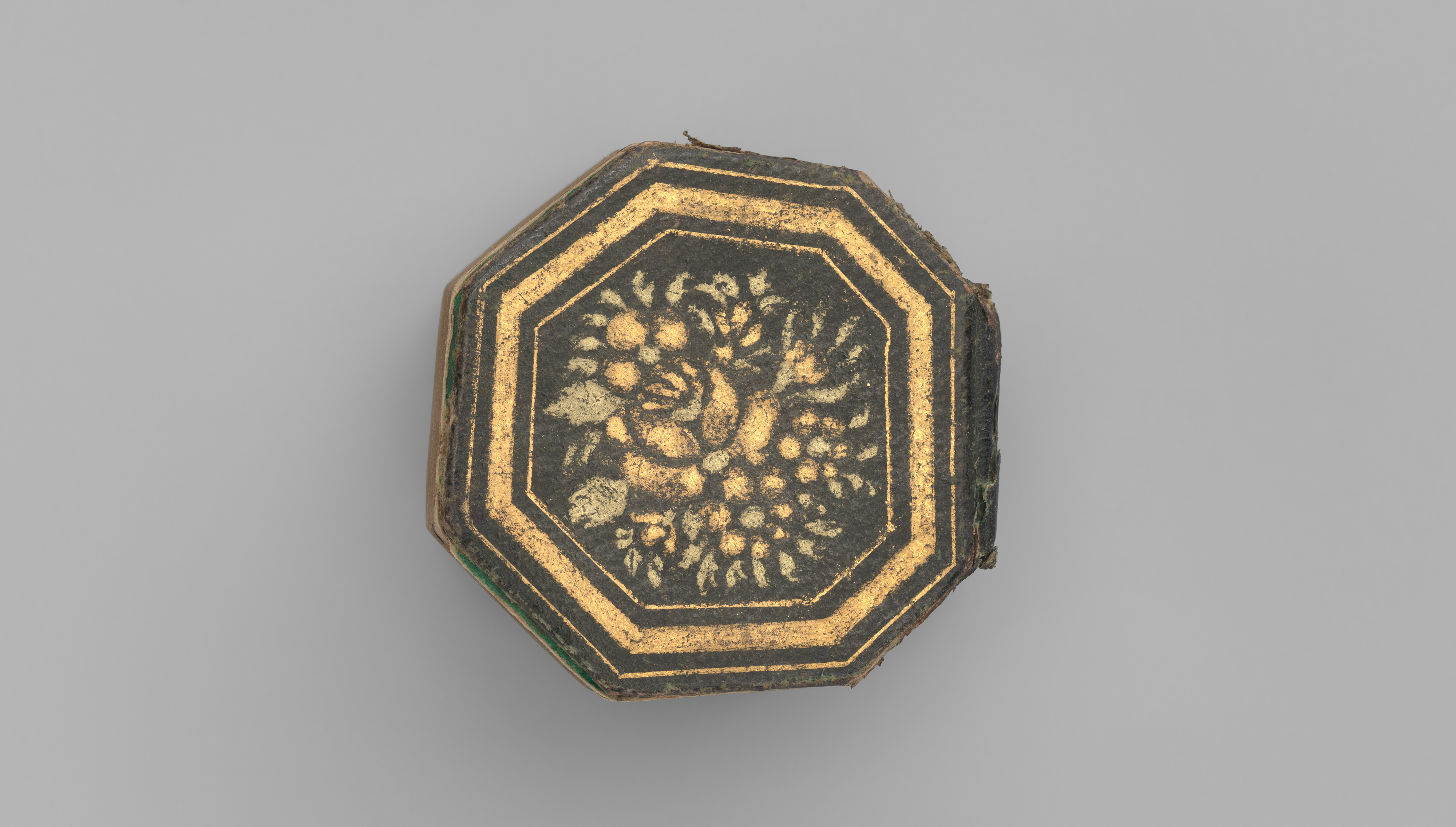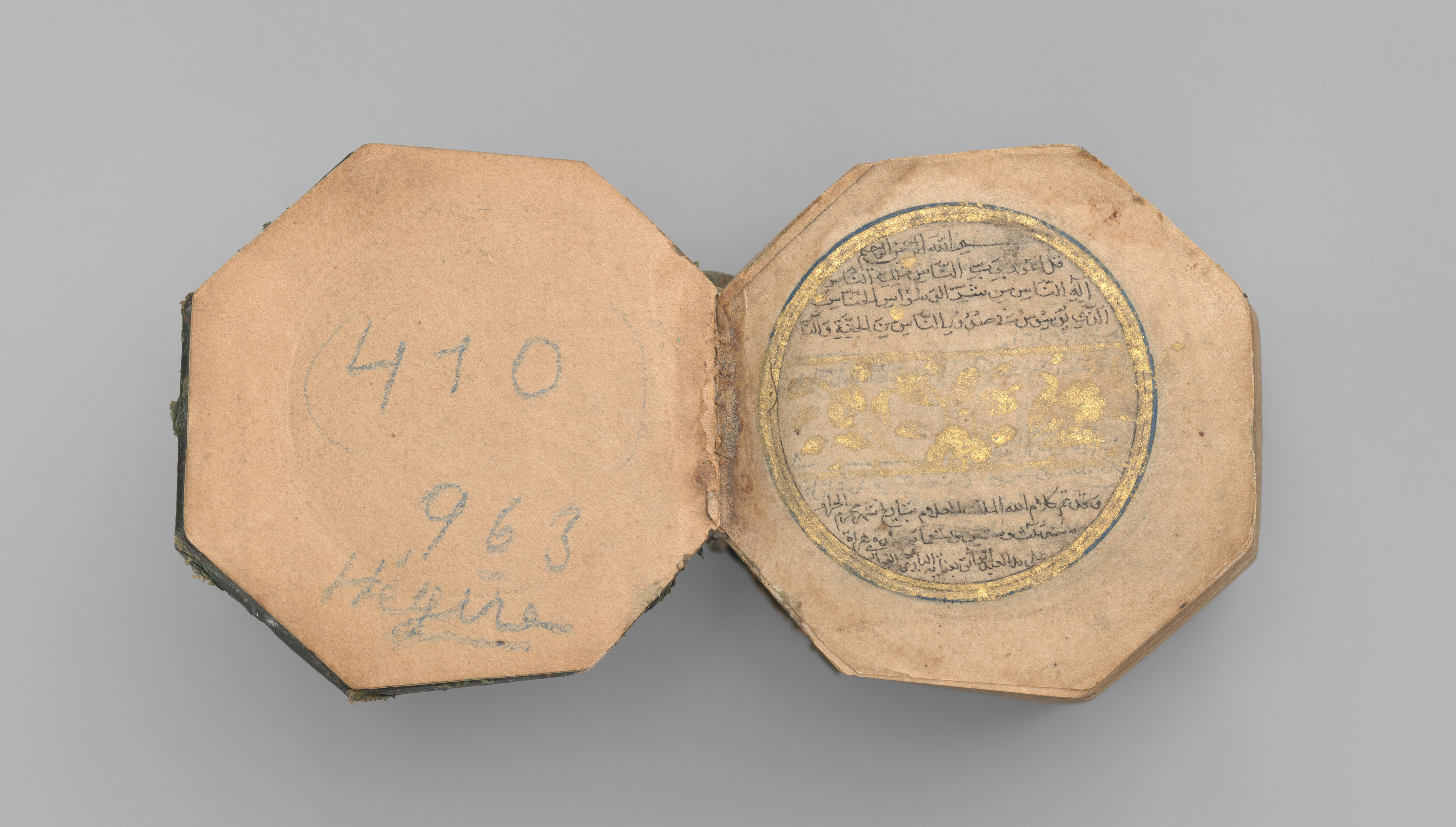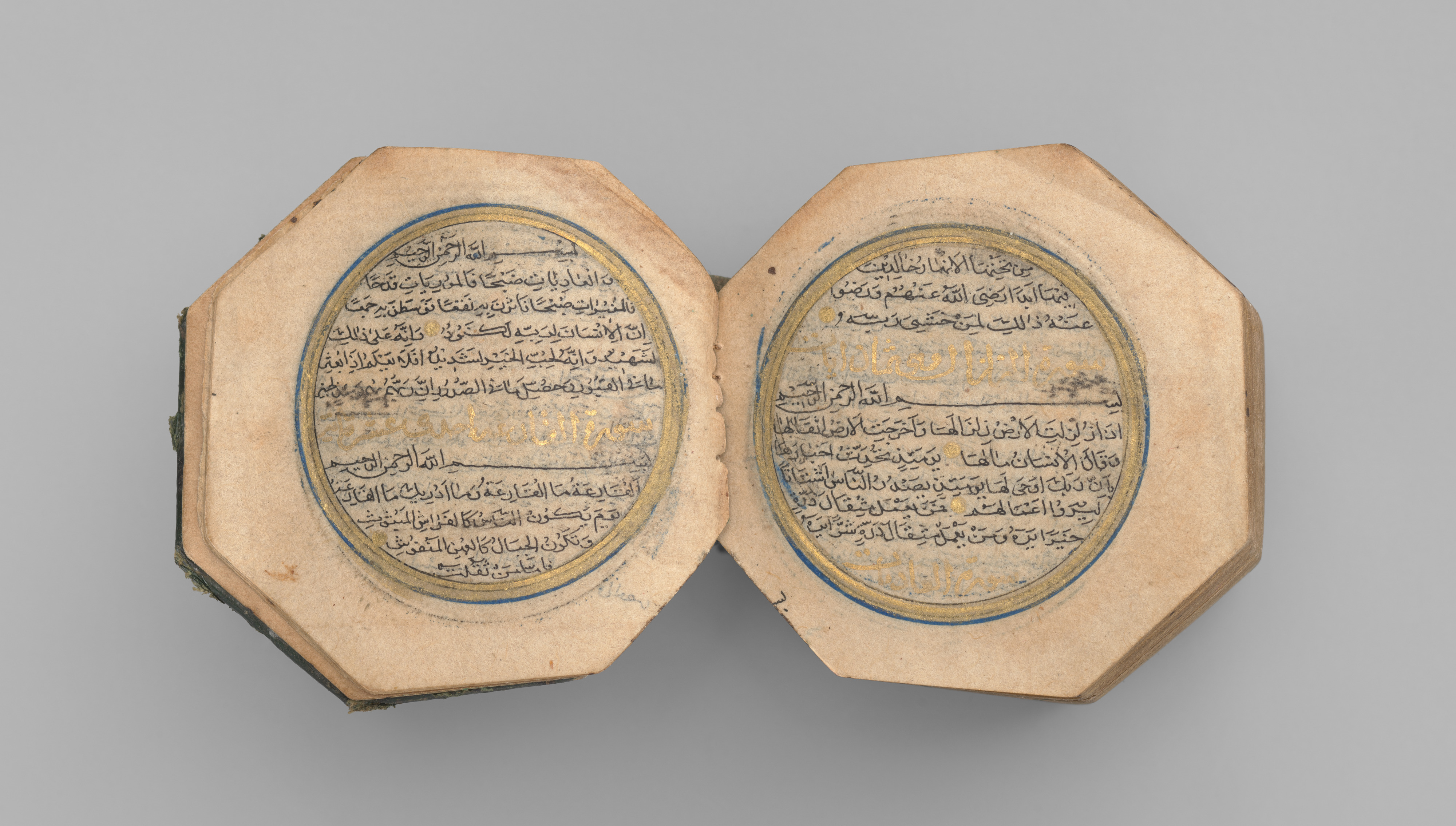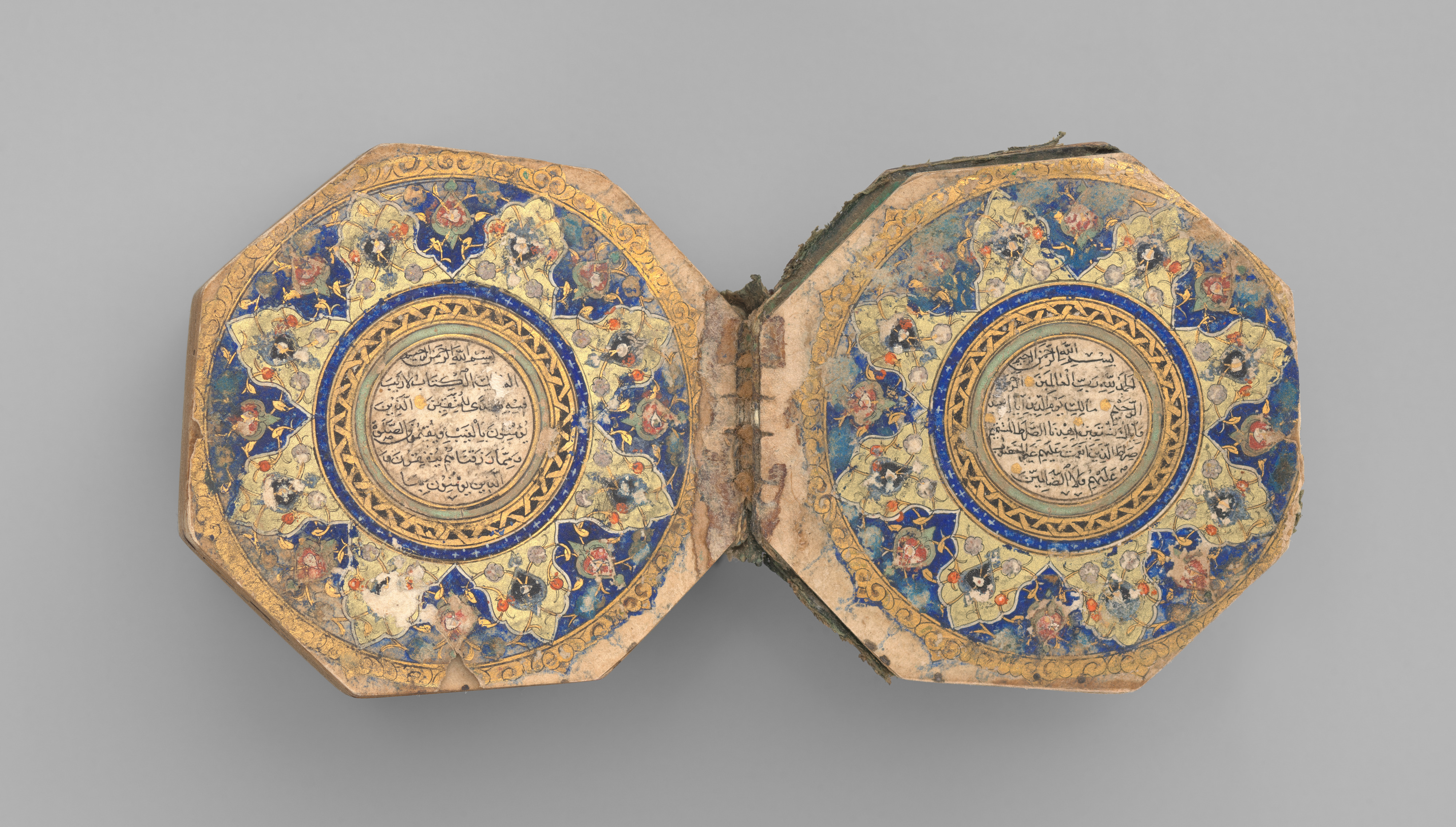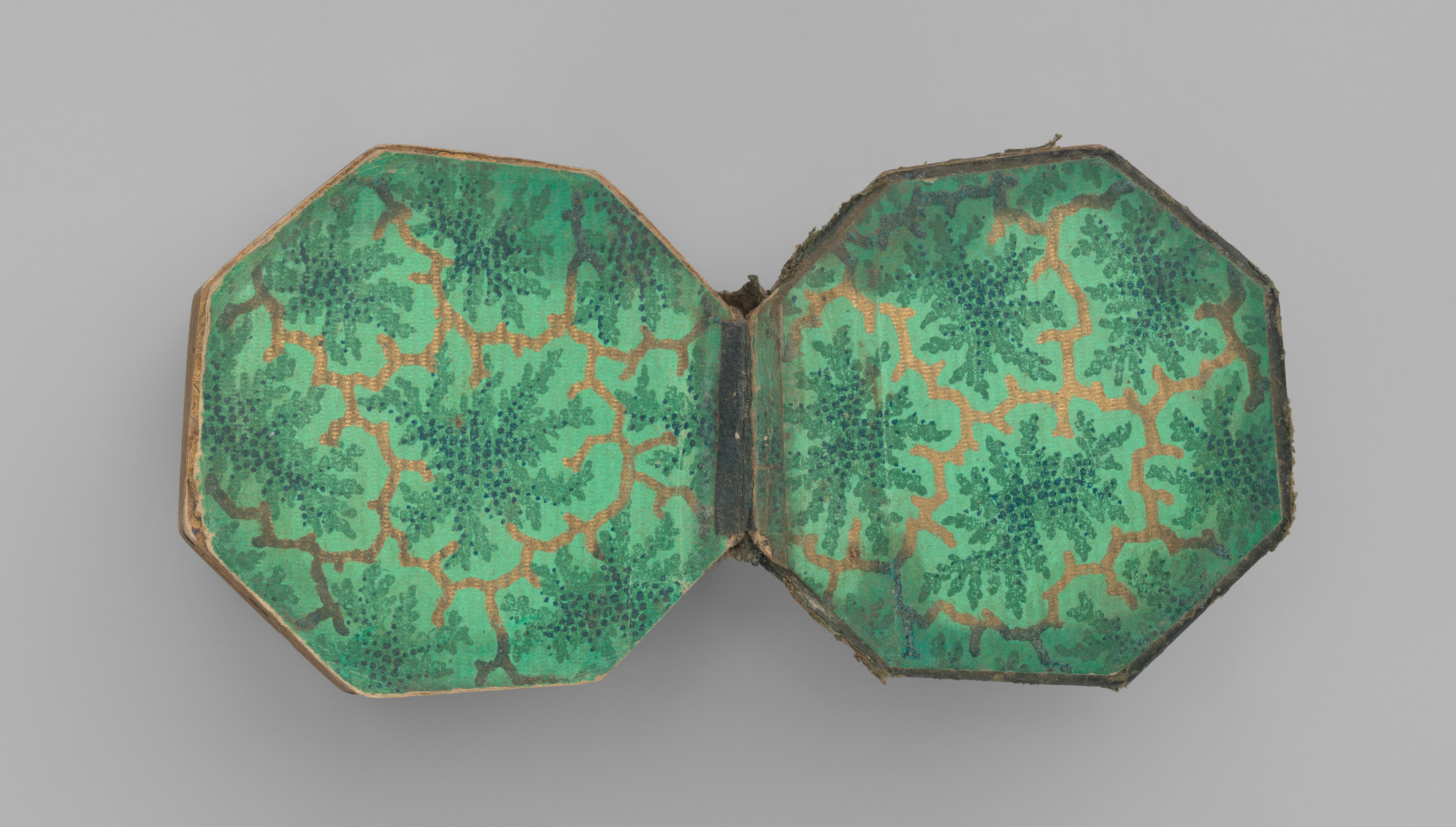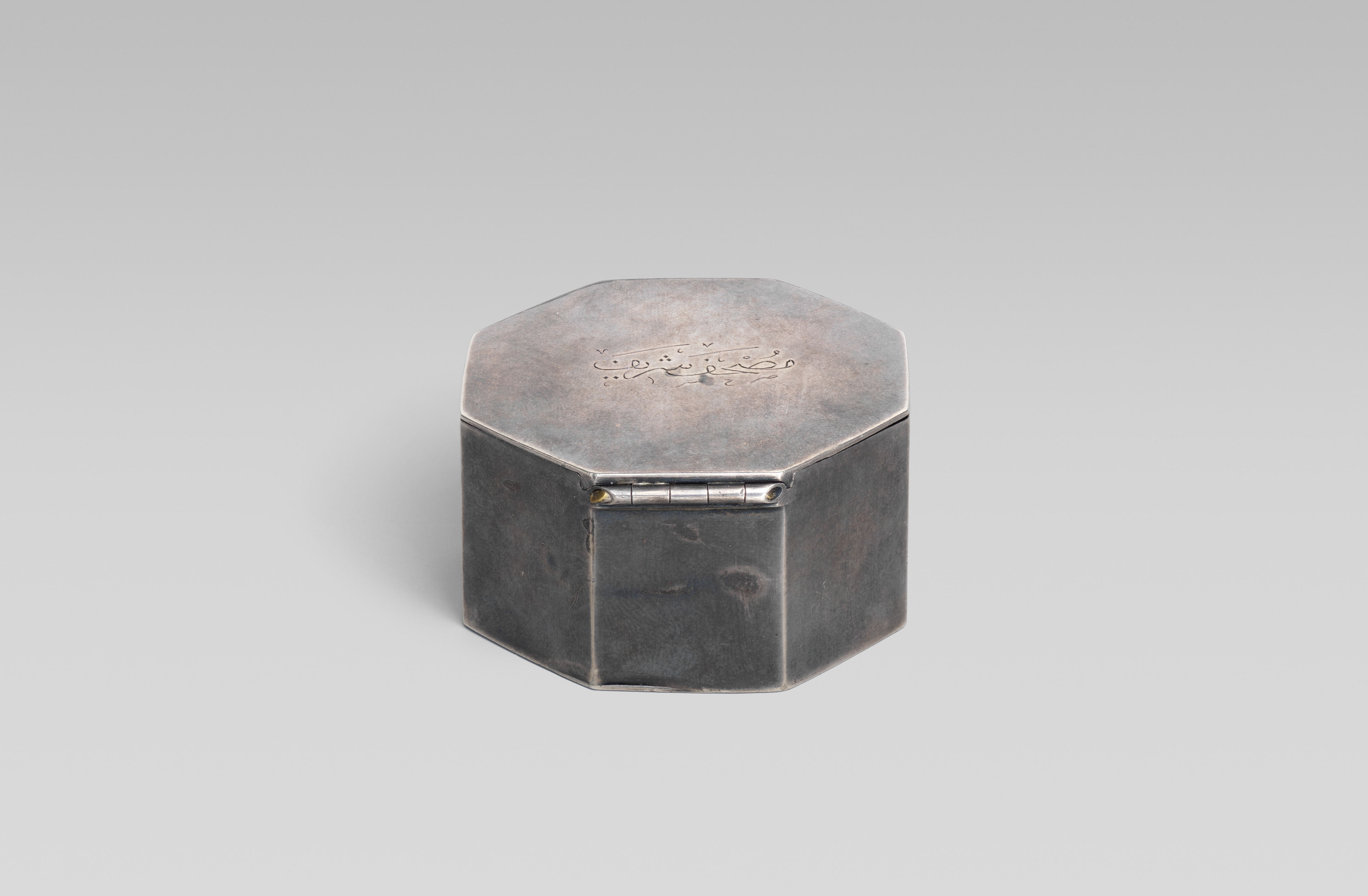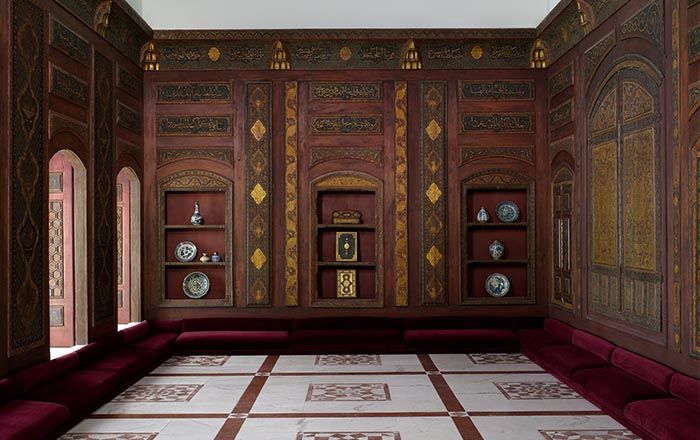Miniature Qur'an and Qur'an Case
Calligrapher Muhammad Al-Qari
Not on view
This complete octagonal miniature Qur'an is an early example from the Safavid period, produced in Herat. The colophon states the place and date of production as well as the name of the scribe. A major center for Qur'an production in the previous century, by the mid‑sixteenth century, under the Safavids, Herat still boasted several exceptional calligraphers who followed the fifteenth‑century influential Timurid style. Miniature Qur’ans held an important and intimate function for the wearer and were used for personal devotion and protection. In the Ottoman Turkish world, octagonal miniature Qur’ans (‘sancak Qur’ans’), which functioned as amulets, encased in a box or fabric pouch, were tied to a military standard and carried to battle. This custom spread as far as India and Persia, where talismanic miniature Qur’ans were also tied to arm‑or wristbands or carried in one’s pocket, and generally worn close to the body.
This image cannot be enlarged, viewed at full screen, or downloaded.
This artwork is meant to be viewed from right to left. Scroll left to view more.
